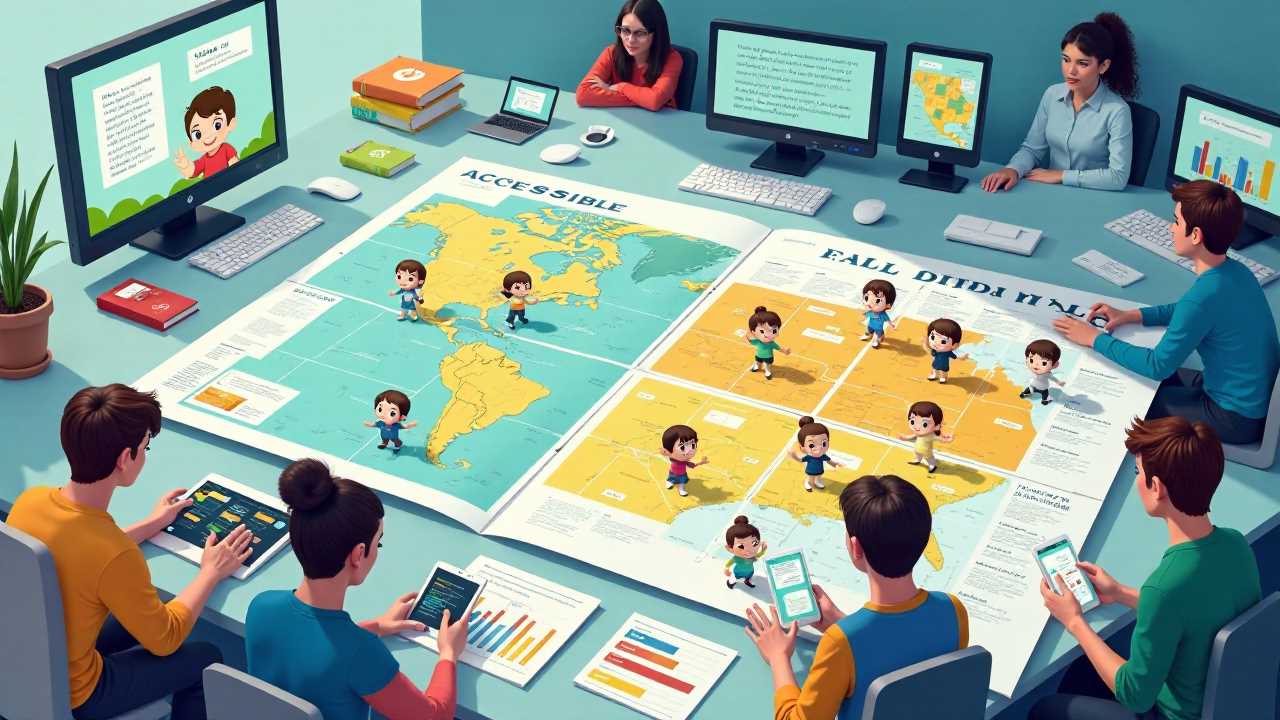
Understanding Visual Impairment Aids
Visual impairment affects millions of individuals worldwide, presenting unique challenges in daily life and learning environments. Visual impairment aids serve as vital tools that enhance accessibility and promote independence for those affected. These aids encompass a wide range of assistive technology, adaptive tools, and learning resources designed to meet the diverse needs of individuals with visual impairments.
Assistive Technology: A Game Changer for Accessibility
Assistive technology plays a pivotal role in transforming the educational landscape for individuals with visual impairments. This technology includes software and devices that facilitate learning and communication. For instance, screen readers convert text into speech, allowing users to access written content effortlessly. Braille displays provide tactile feedback, enabling individuals to read and write in Braille. These tools not only enhance learning experiences but also foster a sense of autonomy.
Moreover, mobile applications designed for navigation and object recognition empower users to interact with their environment confidently. By integrating assistive technology into educational settings, we create an inclusive atmosphere where every learner can thrive.
Adaptive Tools: Tailored Solutions for Individual Needs
The effectiveness of adaptive tools lies in their ability to cater to individual preferences and requirements. These tools range from magnifiers and specialized lighting to tactile graphics and audio books. Each tool is designed to address specific challenges faced by individuals with visual impairments.
For example, handheld magnifiers can assist students in reading printed materials, while tactile graphics enable them to engage with visual concepts through touch. By providing a variety of adaptive tools, educators can ensure that each student receives personalized support, fostering an environment conducive to learning.
Learning Resources: Building a Foundation for Success
Access to quality learning resources is fundamental for individuals with visual impairments. These resources encompass a wide array of materials, including braille books, audio recordings, and digital content formatted for screen readers. By offering diverse formats, we can cater to different learning styles and preferences.
Incorporating learning resources into the curriculum not only enriches the educational experience but also promotes inclusivity. Educators should strive to create a library of accessible materials that students can utilize independently, empowering them to take charge of their learning journey.
Accessibility Solutions: Creating Inclusive Environments
Accessibility solutions are essential in ensuring that individuals with visual impairments can navigate their surroundings effectively. This includes physical modifications to learning spaces, such as installing tactile pathways and ensuring proper lighting. Additionally, digital accessibility is crucial in online learning environments. Websites and educational platforms must adhere to accessibility standards, providing alternative text for images and ensuring compatibility with assistive technology.
By prioritizing accessibility solutions, we can create an environment where all students feel welcome and supported. This commitment to inclusivity not only benefits individuals with visual impairments but also enriches the educational experience for everyone.
Sensory Support: Enhancing Learning Through Multi-Sensory Approaches
Sensory support is vital for individuals with visual impairments, as it engages multiple senses to enhance learning. Incorporating tactile, auditory, and olfactory elements into lessons can create a richer educational experience. For instance, using textured materials in art projects allows students to explore concepts through touch, while audio descriptions can provide context for visual content.
By embracing sensory support, educators can foster a more engaging and effective learning environment. This approach not only benefits students with visual impairments but also encourages creativity and critical thinking among all learners.
Individualized Instruction: Tailoring Education to Unique Needs
Individualized instruction is key to addressing the diverse needs of students with visual impairments. This approach involves assessing each student's strengths and challenges, then designing personalized learning plans that cater to their specific requirements. By incorporating visual impairment aids and other supportive resources, educators can create a tailored educational experience that maximizes each student's potential.
Collaboration among educators, parents, and specialists is essential in developing effective individualized instruction. Regular assessments and feedback ensure that students receive the support they need to succeed academically and socially.
A Commitment to Empowerment
Empowering individuals with visual impairments requires a multifaceted approach that encompasses assistive technology, adaptive tools, learning resources, accessibility solutions, sensory support, and individualized instruction. By prioritizing these elements, we can create an inclusive educational environment that fosters independence and success for all learners.
As we continue to advocate for the rights and needs of individuals with visual impairments, let us remain committed to providing the necessary resources and support. Together, we can empower lives and ensure that every individual has the opportunity to thrive in their educational journey.
 Careers in EducationElementary EducationHigh School EducationEducational TechnologyTeaching StrategiesSpecial EducationPrivacy PolicyTerms And Conditions
Careers in EducationElementary EducationHigh School EducationEducational TechnologyTeaching StrategiesSpecial EducationPrivacy PolicyTerms And Conditions
